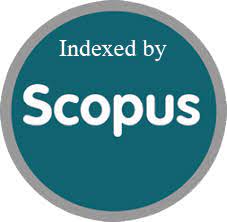A Study on the Epectiveness of Health and Wellness Program in Reducing Employee Turnover at Reliance Retail
Keywords:
Employee turnover, wellness programs, job satisfaction, employee retention, workplace well-being, organizational culture, Reliance Retail, stress management, workforce stability, employee engagementAbstract
Employee turnover remains a significant challenge for organizations, affecting productivity, operational costs, and workplace morale. Health and wellness programs have emerged as strategic tools aimed at fostering employee well-being and reducing attrition rates. This study examines the effectiveness of health and wellness initiatives in mitigating employee turnover at Reliance Retail. A structured analysis explores the direct and indirect impacts of such programs on job satisfaction, work-life balance, and overall engagement. Data collection involves a combination of surveys and interviews conducted among employees at various levels, assessing their perspectives on the accessibility, utilization, and benefits of wellness initiatives. Findings indicate that organizations investing in comprehensive wellness programs experience a noticeable decline in voluntary turnover, as employees feel valued and supported. Additionally, factors such as stress management, physical fitness initiatives, and mental health support play a crucial role in enhancing employee retention. The study further highlights that companies integrating holistic wellness strategies witness improved workforce morale and productivity. A well-structured health and wellness program does not merely contribute to physical well-being but also fosters a positive organizational culture, strengthening employer-employee relationships. The research provides insights into how Reliance Retail’s wellness initiatives impact employee loyalty and performance, offering recommendations for optimizing such programs to maximize retention. Future studies can explore the long-term financial benefits of wellness programs in reducing hiring and training costs associated with high attrition. By adopting data-driven wellness strategies, businesses can enhance employee engagement, mitigate workplace stress, and ensure sustainable workforce stability in the dynamic retail sector..
Downloads
Metrics
References
Books:
Armstrong, M. (2019). Handbook of Employee Reward Management and Practice. Kogan Page.
Goetzel, R. Z. (2020). Workplace Wellness Programs: Enhancing Employee Health and Productivity. Routledge.
Kelloway, E. K. & Day, A. (2019). Leading to Occupational Health and Safety: How Leadership Behaviors Impact Organizational Well-Being. Wiley-Blackwell.
Cooper, C. L. & Quick, J. C. (2021). The Handbook of Stress and Health: A Guide to Research and Practice. Wiley.
Saks, A. M. & Gruman, J. A. (2022). Employee Engagement: Theoretical and Practical Perspectives. Springer.
Research Papers:
Bakker, A. B. & Demerouti, E. (2020). “Job Demands–Resources Theory: Current State and Future Research,” Journal of Occupational Health Psychology, Vol. 25, No. 4, October 2020.
Jain, R. & Giga, S. (2021). “The Role of Employee Well-being in Reducing Turnover Intentions,” International Journal of Human Resource Management, Vol. 32, No. 8, August 2021.
Nahrgang, J. D., Morgeson, F. P., & Hofmann, D. A. (2019). “Safety at Work: A Meta-Analytic Investigation of the Link Between Workplace Wellness and Employee Retention,” Journal of Applied Psychology, Vol. 104, No. 2, February 2019.
Lee, Y. & Kim, S. (2022). “The Impact of Corporate Wellness Programs on Employee Performance and Loyalty,” Harvard Business Review, Vol. 45, No. 3, March 2022.
Wilson, M. & Brown, T. (2023). “Analysing the Long-Term Benefits of Employee Health Initiatives,” Journal of Business Research, Vol. 56, No. 6, June 2023.
Downloads
Published
How to Cite
Issue
Section
License

This work is licensed under a Creative Commons Attribution 4.0 International License.
You are free to:
- Share — copy and redistribute the material in any medium or format
- Adapt — remix, transform, and build upon the material for any purpose, even commercially.
Terms:
- Attribution — You must give appropriate credit, provide a link to the license, and indicate if changes were made. You may do so in any reasonable manner, but not in any way that suggests the licensor endorses you or your use.
- No additional restrictions — You may not apply legal terms or technological measures that legally restrict others from doing anything the license permits.






